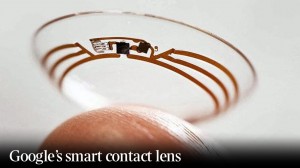It has been found that among 19 people, one has diabetes. Diabetes has been a serious issue for many people around the globe, especially to those who are poor and cannot access enough resources to check their glucose level regularly and don’t have diabetes medicine. Their life is at risk.
Diabetes patients have to be very careful while eating and regularly have to prick their fingers in order to check sugar levels, which is very disruptive and painful. Though automated glucose meters are going to be used by many diabetes patients, it can still create discomfort and other problems. There are other ways of reliably testing blood sugar levels and one of them is your tears but collecting tears is more difficult than pricking your fingers so that was not an option until you have a smart contact lenses.
Yes, you heard it right! Google is on a project that makes use of a wearable device, smart contact lens that detects the glucose levels via the wearer’s tears and alerts them when the level dips or rises that can be transmitted instantly to a nearby display — your smartphone, smartwatch, or head-mounted display (Google Glass). Future versions of the smart lens might even have a built-in LED that lights up if your glucose level crosses above or below a given threshold. This is obviously much easier and convenient than regularly pricking your finger.
 The project co-founder Brian Otis and Babak Parviz wrote “It’s still early days for this technology, but we’ve completed multiple clinical research studies which are helping to refine our prototype. We hope this could someday lead to a new way for people with diabetes to manage their disease,” in a blog post.
The project co-founder Brian Otis and Babak Parviz wrote “It’s still early days for this technology, but we’ve completed multiple clinical research studies which are helping to refine our prototype. We hope this could someday lead to a new way for people with diabetes to manage their disease,” in a blog post.
The prototype contact lens houses a sensor between two layers of lenses that measures the glucose levels in tears. While it might sound incredibly advanced, the technology in Google’s smart contact lens isn’t that wild. There’s a tiny whole in the lens that lets tear fluid seep over the glucose monitor to get regular readings. The lens consist of a tiny antenna, capacitor and controller which helps to move the information gathered from the lens to a device such as handheld monitor where the data can be read and analysed. It will draw its power from that device and communicate with it using a wireless technology known as RFID. At the moment, the company said, it can get a level reading once every second.


